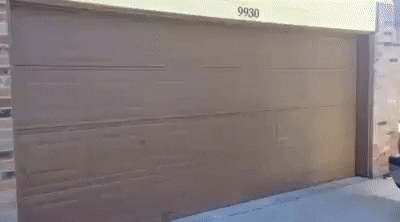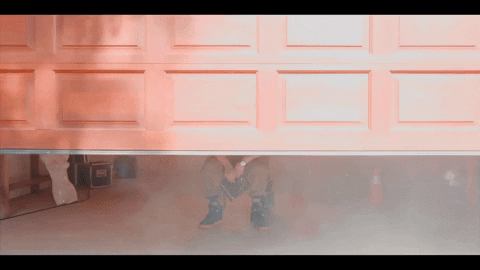9 Keys To Coaching Athletes
In 2008 I opened up Garage Strength and started in a 400 square foot garage. That’s where the name stems from. My parents were kind enough to let me take over half of the garage. Over time, I took over the whole garage. That is when some serious lifting started to take place.

In the first gym, all we had were two platforms, a squat rack, and a couple of sets of dumbbells. We had virtually nothing. The dream was to create a crazy sports performance center. The first key lessons I learned as a coach go back to this time frame.
What did I have to do to develop freak athletes? That is all I thought about. How could I develop freaks? I felt developing freaks would create word of mouth locally that more people would come and train at Garage Strength to grow the business.
Let’s jump into the 9 key lessons for sports performance.
1. Better Communication
Understanding what future pacing is to help young kids establish goals. Talking to athletes of all walks of life and informing them about your belief in them and belief in their capabilities. You have to get the athletes to show up frequently.

I got every athlete’s cell phone number. If an athlete didn’t show up four to five days a week I texted them. I hounded them, reminding them of the goals they told me they had, getting them to train all the time and train frequently.
That is the first big lesson: communicate your goals and the athletes’ goals and then hold them accountable.
2. Focus On Technical Coordination
In a small gym, you don’t have a lot of room to work with so you are only able to do specific movements that will transfer to other areas. That means doing weightlifting movements like the clean, jerk, snatch, and variations of those movements; it means teaching athletes at a young age how to move properly and how to coordinate with high rate muscular actions.
At the same time, we want to teach the benefit of mobility, the technique, having a technical mindset, thinking logically, and pushing the weight on the movements. It all makes athletes more explosive.
3. Pushing Absolute Strength
Middle school and high school athletes need their absolute strength numbers pushed, especially once they are in high school. Push step-ups, single-leg squats, or crazy isometric holds. The point is to get athletes strong, strong. Have athletes squat and press often and heavy.

4. Programming
By 2011, we were fortunate enough that I had been able to save up a bunch of money. We ended up buying a farm with my sister. We moved into the barn which gave us a 2500 foot square gym. This gave us more space to play with.
We had had some of that word-of-mouth success spread and had some financial success that allowed us to create a better gym and facility for the athletes. That, in turn, brought in more athletes of different walks of life and of different levels of capabilities (like Sam Mattis). During this period, I started to take my notes from Dr. B and really started to lay out my thoughts and organizations of periodization.
By having people start to work for me, we were able to start to experiment with things. The groundwork for our periodization was really laid during 2011-2017. We took into account what to do in the season and out of season for athletes in different sports. We really grasped programming.

And because we had the extra space and room, we were able to bring in more speed work and parabolic work.
5. Plyometrics
We wanted to get our athletes to jump more, absorb energy more effectively, utilize contrast training, and experiment with contrast methods. We learned a lot through our experimentation.
Everybody needs to use plyometrics inside their system to increase the power output and twitchiness of their athletes.
6. Speed Work
A bigger turf area allowed us to do single-leg bounds and work on technique during the drive phase. The time inside the barn allowed us to understand and develop our periodization to layout the programming accordingly to best use plyometrics and speed work in conjunction with technical coordination and absolute strength movements.
We figured to do the technical coordination and absolute strength work at the beginning of the week and at the tail-end of the week, we could do plyometrics and speed work.
7. Athlete Reactive Analysis
By 2017 we moved into our current facility where we are now. A 10,000-foot facility. I knew word of mouth was going to be the biggest way for us to market. We had to chip away constantly and get better at the job to continue to provide high-end sports performance training for everyone so every athlete could be the best athletic version of themself.

At the new gym, we have more employees and can test our athletes more. We can look at what athletes are doing and find different methods. That is where we came up with the athlete reactive analysis.
The athlete reactive analysis is taking the athletes and bucketing them on how they engage with you socially, when you give a cue, when they have a fail, when they are criticized, or how they react in different situations to know how to approach them properly to elicit the best response possible.
We have the type 1 athlete (the zen-like athlete), type 2 athlete (the social athlete), and type 3 athlete (the meathead type athlete). We started to use our periodization with the pieces of the athlete reactive analysis. We can implement the athletes at different points to see how they react to different types of stimulus, fatigue, and stress.
8. Dynamic Trunk Control
Athlete reactive analysis led to even more testing. We started to play around with dynamic trunk control. We started to learn from high-level sports performance scientists from the outside world outside of our Garage Strength bubble.
Our knowledge of dynamic trunk control led to our understanding of how DTC can improve speed, plyometric work, and even transfer of training with technical coordination. Dynamic trunk control is a big key to athlete sports performance.
9. Recovery, Nutrition, And Supplements
We started playing around with a sauna on sight, high-end nutrition and using Earth Fed Muscle supplements to see how protein gave a better reaction, creatine impacted training, and how much better sleep was with ZMA. We played around with tests around recovery, nutrition, and supplements.
Factoring recovery, nutrition, and supplements with all the other aspects led to even higher levels of performance.
Recap
It comes down to how you can apply the 9 keys as a coach. You can sit there and layout your strength training program by starting out, day 1, leg day, with a technical coordination lift. So do a clean. That leads to an absolute strength movement. So do a back squat. That leads to dynamic trunk control or accessory movements. So do overhead sliding cossack squats or sideband walks and trunk stimulation work. That then leads into day 2, upper body day, with a technical coordination movement like a push press. Then a bench press with some back work (absolute strength) and then some more super-sets of dumbbell work, concluding with ab work. Then day 3, an athlete day, the focus goes to plyometric and speed work.
Want to learn more about it in greater detail? Check out The Sports Performance Bible and dive into the deep end.
DANE MILLER
Dane Miller is the owner and founder of Garage Strength Sports Performance. He works with a select handful of clients on building comprehensive programs for fitness and nutrition. Several times a year he leads a workshop for coaches, trainers, and fitness enthusiasts.


